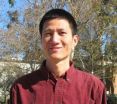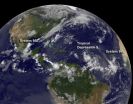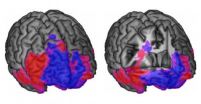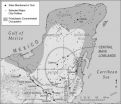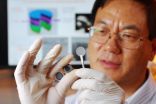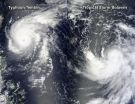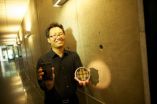(Press-News.org) RIVERSIDE, Calif. — Transcription is a cellular process by which genetic information from DNA is copied to messenger RNA for protein production. But anticancer drugs and environmental chemicals can sometimes interrupt this flow of genetic information by causing modifications in DNA.
Chemists at the University of California, Riverside have now developed a test in the lab to examine how such DNA modifications lead to aberrant transcription and ultimately a disruption in protein synthesis.
The chemists report that the method, called "competitive transcription and adduct bypass" or CTAB, can help explain how DNA damage arising from anticancer drugs and environmental chemicals leads to cancer development.
"Aberrant transcription induced by DNA modifications has been proposed as one of the principal inducers of cancer and many other human diseases," said Yinsheng Wang, a professor of chemistry, whose lab led the research. "CTAB can help us quantitatively determine how a DNA modification diminishes the rate and fidelity of transcription in cells. These are useful to know because they affect how accurately protein is synthesized. In other words, CTAB allows us to assess how DNA damage ultimately impedes protein synthesis, how it induces mutant proteins. "
Study results appeared online in Nature Chemical Biology on Aug. 19.
Wang explained that the CTAB method can be used also to examine various proteins involved in the repair of DNA. One of his research group's goals is to understand how DNA damage is repaired — knowledge that could result in the development of new and more effective drugs for cancer treatment.
"This, however, will take more years of research," Wang cautioned.
His lab has a long-standing interest in understanding the biological and human health consequences of DNA damage. The current research was supported by the National Cancer Institute, the National Institute of Environmental Health Sciences and the National Institute of Diabetes and Digestive and Kidney Diseases of the National Institutes of Health.
Wang was joined in the research by UC Riverside's Changjun You (a postdoctoral scholar and the research paper's first author), Xiaoxia Dai, Bifeng Yuan, Jin Wang and Jianshuang Wang; Philip J. Brooks of the National Institute on Alcohol Abuse and Alcoholism, Md.; and Laura J. Niedernhofer of the University of Pittsburgh School of Medicine, Penn.
Next, the researchers plan to use CTAB to investigate how other types of DNA modifications compromise transcription and how they are repaired in human cells.
INFORMATION:
The University of California, Riverside (www.ucr.edu) is a doctoral research university, a living laboratory for groundbreaking exploration of issues critical to Inland Southern California, the state and communities around the world. Reflecting California's diverse culture, UCR's enrollment has exceeded 20,500 students. The campus will open a medical school in 2013 and has reached the heart of the Coachella Valley by way of the UCR Palm Desert Center. The campus has an annual statewide economic impact of more than $1 billion. A broadcast studio with fiber cable to the AT&T Hollywood hub is available for live or taped interviews. UCR also has ISDN for radio interviews. To learn more, call (951) UCR-NEWS.
New laboratory test assesses how DNA damage affects protein synthesis
Research development in lab of UC Riverside's Yinsheng Wang could lead to development of new and effective drugs to treat cancer
2012-08-22
ELSE PRESS RELEASES FROM THIS DATE:
NASA sees an active tropical Atlantic again
2012-08-22
The Atlantic Ocean is kicking into high gear with low pressure areas that have a chance at becoming tropical depressions, storms and hurricanes. Satellite imagery from NASA's Terra and Aqua satellites have provided visible, infrared and microwave data on four low pressure areas. In addition, NASA's GOES Project has been producing imagery of all systems using NOAA's GOES-13 satellite to see post-Tropical Storm Gordon, Tropical Depression 9, and Systems 95L and 96L.
Tropical Storm Gordon is no longer a tropical storm and is fizzling out east of the Azores. Tropical Depression ...
Thinking and choosing in the brain
2012-08-22
PASADENA, Calif.—The frontal lobes are the largest part of the human brain, and thought to be the part that expanded most during human evolution. Damage to the frontal lobes—which are located just behind and above the eyes—can result in profound impairments in higher-level reasoning and decision making. To find out more about what different parts of the frontal lobes do, neuroscientists at the California Institute of Technology (Caltech) recently teamed up with researchers at the world's largest registry of brain-lesion patients. By mapping the brain lesions of these patients, ...
Multiple factors, including climate change, led to collapse and depopulation of ancient Maya
2012-08-22
TEMPE, Ariz. — A new analysis of complex interactions between humans and the environment preceding the 9th century collapse and abandonment of the Central Maya Lowlands in the Yucatán Peninsula points to a series of events — some natural, like climate change; some human-made, including large-scale landscape alterations and shifts in trade routes — that have lessons for contemporary decision-makers and sustainability scientists.
In their revised model of the collapse of the ancient Maya, social scientists B.L. "Billie" Turner and Jeremy "Jerry" A. Sabloff provide an up-to-date, ...
Time flies when you're having goal-motivated fun
2012-08-22
Though the seconds may tick by on the clock at a regular pace, our experience of the 'fourth dimension' is anything but uniform. When we're waiting in line or sitting in a boring meeting, time seems to slow down to a trickle. And when we get caught up in something completely engrossing – a gripping thriller, for example – we may lose sense of time altogether.
But what about the idea that time flies when we're having fun? New research from psychological science suggests that the familiar adage may really be true, with a caveat: time flies when we're have goal-motivated ...
Self-charging power cell converts and stores energy in a single unit
2012-08-22
Researchers have developed a self-charging power cell that directly converts mechanical energy to chemical energy, storing the power until it is released as electrical current. By eliminating the need to convert mechanical energy to electrical energy for charging a battery, the new hybrid generator-storage cell utilizes mechanical energy more efficiently than systems using separate generators and batteries.
At the heart of the self-charging power cell is a piezoelectric membrane that drives lithium ions from one side of the cell to the other when the membrane is deformed ...
NASA satellites see 2 intensifying northwestern Pacific tropical cyclones
2012-08-22
There's double trouble in the northwestern Pacific Ocean in the form of Typhoon Tembin and Tropical Storm Bolaven. NASA's Terra and Aqua satellites teamed up to provide a look at both storms in one view.
The Moderate Resolution Imaging Spectroradiometer (MODIS) instrument flies onboard NASA's Aqua and Terra satellites and the MODIS instrument on each captured a storm when both satellites flew over them on August 21 after midnight (Eastern Daylight Time). The two MODIS images which featured Bolaven and Tembin over the Philippine Sea were combined by NASA's MODIS Rapid ...
Many options, good outcomes, for early-stage follicular lymphoma
2012-08-22
A University of Rochester Medical Center study published in the Journal of Clinical Oncology, challenges treatment guidelines for early stage follicular lymphoma, concluding that six different therapies can bring a remission, particularly if the patient is carefully examined and staged at diagnosis.
The research underlines the fact that when cancer strikes, modern patients and their oncologists across the United States are taking many diverse treatment paths when there is scant data to support one method over another. This study suggests that the old standard approach ...
Sanctuary chimps show high rates of drug-resistant staph
2012-08-22
Chimpanzees from African sanctuaries carry drug-resistant, human-associated strains of the bacteria Staphlyococcus aureus, a pathogen that the infected chimpanzees could spread to endangered wild ape populations if they were reintroduced to their natural habitat, a new study shows.
The study by veterinarians, microbiologists and ecologists was the first to apply the same modern sequencing technology of bacterial genomes used in hospitals to track the transmission of staph from humans to African wildlife. The results were published Aug. 21 by the American Journal of Primatology.
Drug-resistant ...
'Electronic nose' prototype developed
2012-08-22
RIVERSIDE, Calif. (www.ucr.edu) — Research by Nosang Myung, a professor at the University of California, Riverside, Bourns College of Engineering, has enabled a Riverside company to develop an "electronic nose" prototype that can detect small quantities of harmful airborne substances.
Nano Engineered Applications, Inc., an Innovation Economy Corporation company, has completed the prototype which is based on intellectual property exclusively licensed from the University of California. The device has potential applications in agriculture (detecting pesticide levels), industrial ...
Low oxygen levels may decrease life-saving protein in spinal muscular atrophy
2012-08-22
Investigators at Nationwide Children's Hospital may have discovered a biological explanation for why low levels of oxygen advance spinal muscular atrophy (SMA) symptoms and why breathing treatments help SMA patients live longer. The findings appear in Human Molecular Genetics.*
SMA is a progressive neurodegenerative disease that causes muscle damage and weakness leading to death. Respiratory support is one of the most common treatment options for severe SMA patients since respiratory deficiencies increase as the disease progresses. Clinicians have found that successful ...
LAST 30 PRESS RELEASES:
What causes some people’s gut microbes to produce high alcohol levels?
Global study reveals widespread burning of plastic for heating and cooking
MIT study shows pills that communicate from the stomach could improve medication adherence
Searching for the centromere: diversity in pathways key for cell division
Behind nature’s blueprints
Researchers search for why some people’s gut microbes produce high alcohol levels
Researchers find promising new way to boost the immune response to cancer
Coffee as a staining agent substitute in electron microscopy
Revealing the diversity of olfactory receptors in hagfish and its implications for early vertebrate evolution
Development of an ultrasonic sensor capable of cuffless, non-invasive blood pressure measurement
Longer treatment with medications for opioid use disorder is associated with greater probability of survival
Strategy over morality can help conservation campaigns reduce ivory demand, research shows
Rising temperatures reshape microbial carbon cycling during animal carcass decomposition in water
Achieving ultra-low-power explosive jumps via locust bio-hybrid muscle actuators
Plant-derived phenolic acids revive the power of tetracycline against drug-resistant bacteria
Cooperation: A costly affair in bacterial social behaviour?
Viruses in wastewater: Silent drivers of pollution removal and antibiotic resistance
Sub-iethal water disinfection may accelerate the spread of antibiotic resistance
Three in four new Australian moms struggle with body image
Post-stroke injection protects the brain in preclinical study
Cardiovascular risk score predicts multiple eye diseases
Health: estimated one in ten British adults used or interested in GLP-1 medications for weight loss
Exercise to treat depression yields similar results to therapy
Whooping cough vaccination for pregnant women strengthens babies’ immune system
Dramatic decline in new cases of orphanhood in Uganda driven by HIV treatment and prevention programs
Stopping weight loss drugs linked to weight regain and reversal of heart health markers
Higher intake of food preservatives linked to increased cancer risk
Mass General Brigham–developed cholera vaccine completes phase 1 trial
First experimental validation of a “150-year-old chemical common sense” direct visualization of the molecular structural changes in the ultrafast anthracene [4+4] photocycloaddition reaction
Lack of support for people on weight loss drugs leaves them vulnerable to nutritional deficiencies, say experts
[Press-News.org] New laboratory test assesses how DNA damage affects protein synthesisResearch development in lab of UC Riverside's Yinsheng Wang could lead to development of new and effective drugs to treat cancer
